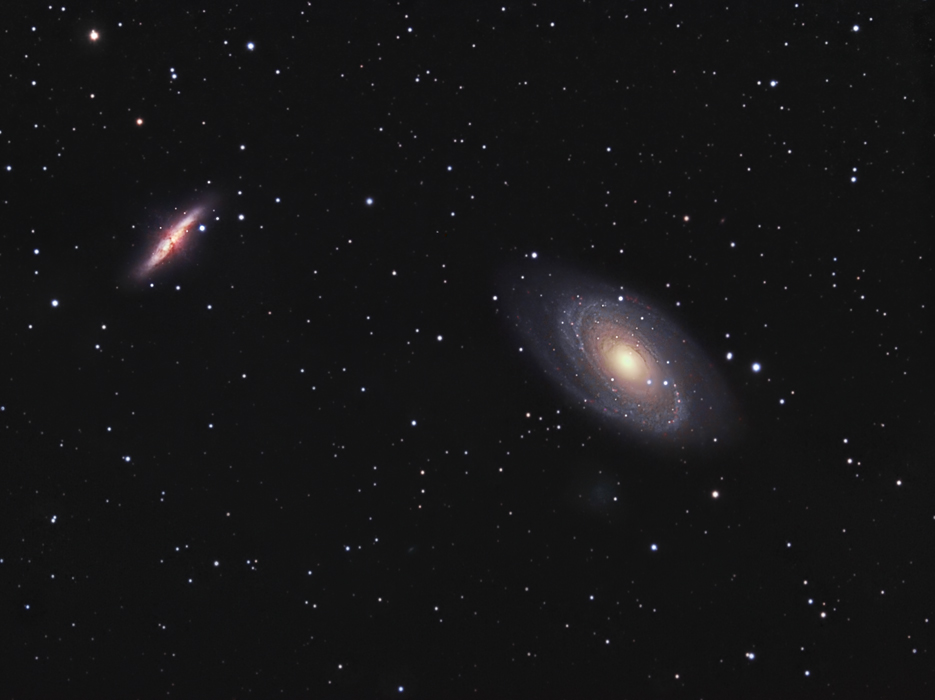M81 (Bode's Galaxy) and M82 (Cigar Galaxy)
Characteristics:
Magnitude: 6.9
Size: about 21' x 10'
Distance: 12 million light years
RA: 9h 55m 58s
Dec: 69 degrees 02' 43"
Description:
M81 (the larger
galaxy on the right) is a grand-design spiral galaxy
that was discovered by Johann Bode in 1774. Due to its
relatively large size and high surface brightness, it is an easy target
for visual observation through small aperture telescopes. M81
forms a galactic pair with M82 (on the left), located only 150,000
light
years apart, and the two galaxies have influenced each other through a
close encounter occurring tens of millions of years ago. Closer examination
of
this image reveals a larger
companion galaxy just to the bottom of M81, referred to as Holmberg
IX. More information about M81
may be found here.
M82 (the smaller galaxy on the left)
is a companion to
M81 and was also discovered by Johann Bode in 1774. It has an
odd,
oblong shape that is thought to have arisen from gravitational
interaction with M81 millions of years ago. High resolution
color images of M82 show dramatic tendrils of red gas shooting from
the center of the galaxy.
Photographic Details:
Date: December 7 and 11, 2004 (for M81 and M82 luminance,
respectively). January 10, 2005 (widefield luminance, RGB,
and Ha data).
Scope: January 10,
2005: Takahashi
Sky 90 at f4.5 with field flattener/focal reducer, on the G11 Losmandy
Mount. The December 7 and 11 luminance images were taken remotely
using a Takahashi Epsilon 250mm scope at
New Mexico Skies (details found at M81 and M82, respectively).
Autoguider: SBIG STV with
e-finder.
Camera: SXV-H9
Filter: Astronomik
Ha filter (13 nm bandpass); Type II R, G, B, plus clear filter set.
Exposures: L:(HaR:G:B).
205' for Luminance (includes all luminance data from 12/7/04, 12/11/04,
and 1/10/05); 30' for Ha; 20' each for R, G, and B, all unbinned.
Total exposure time about 5 hours.
Conditions: (January 10, 2005) Temperature 36 degrees F; average
transparency; average seeing; a bit breezy.
Post-processing: Alignment
done in ImagesPlus.
Sigma
combined using RC Sigma Reject Plug-in for MaximDL. DDP was
performed in ImagesPlus
(IP). Subsequent
levels and curves adjustments in Photoshop CS (16 bit format).
The red channel was comprised of an Ha:R mix (100% opacity for R using
lighten mode) in order to highlight the HII regions in the final image.
Please
note: Graphics on this website
may not be reproduced without author permission.
Back to Galaxies
Home
